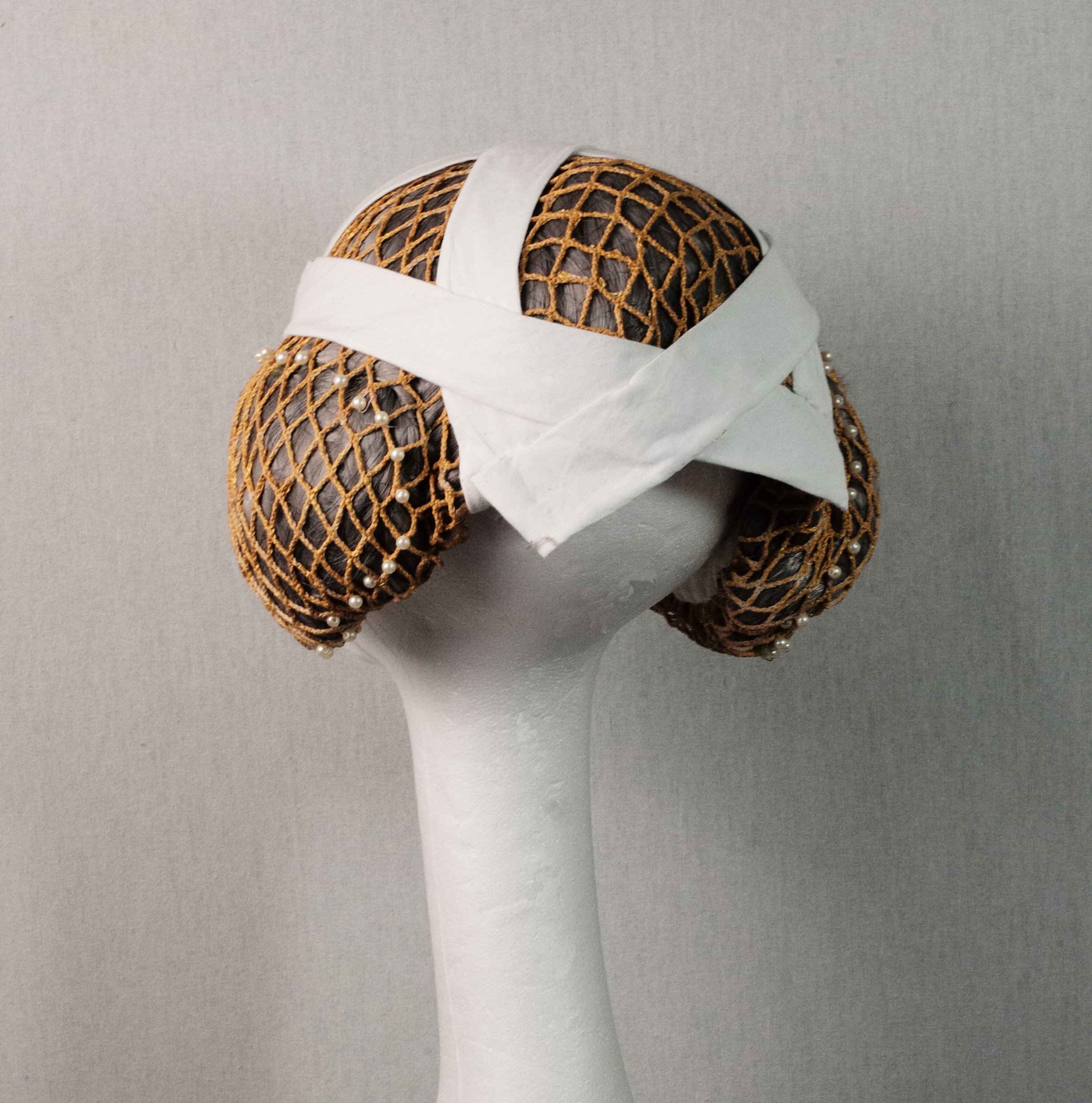A Fascinating History 3: Crespine, Barbette and Fillet
So, when did the fascinator first appear in Europe? Using the following description to look for examples of fabulous and distracting headwear across European history, we will begin in the Medieval era.
“The thing that makes it a fascinator is the focus on a trim,” says Gretchen Fenston, a New York City milliner and an archivist at Condé Nast. “The base is usually not noticeable. All you see is horsehair or veil or tulle or feathers or flowers.” It’s the trim without the hat,” (Jacobs).
The first headpiece that fits our description of “fascinator,” is this Medieval headpiece combination that, while it may sound a bit like a fast food order today, was a once hallmark headpiece of elegance, refinement, and was an obvious symbol of wealth.
1. *CRESPINE, BARBETTE, AND FILLET: The Medieval women of Europe, in the 14th century, wore a combination headpiece that included a golden hair covering, called a “crespine” like the one shown here. The “barbette and fillet” is the set of stiff linen strips that encompass the head (fillet) and face (barbette). Sometimes a wimple, or veil, was attached to this configuration. Women of the upper classes would add pearls or other embellishments to the crespine to denote status, (De Courtais, 18). This reconstruction was made with a crocheted and gilded cotton thread crespine, and bias-cut, stiffened linen barbette and fillet.




